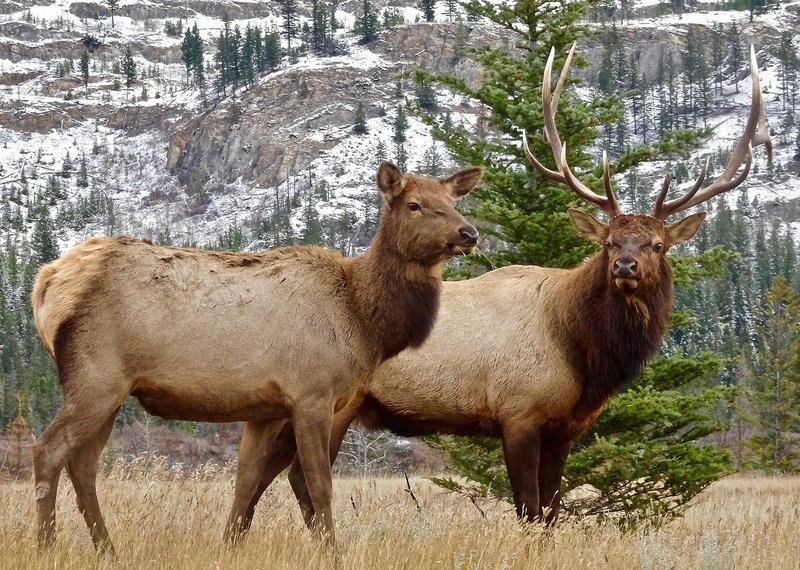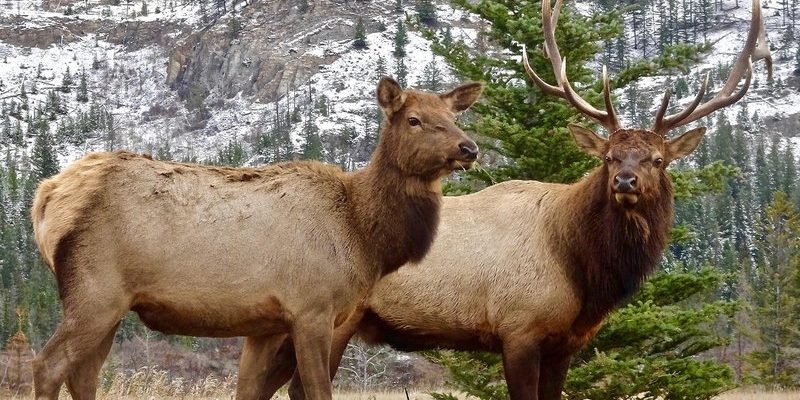
You know how every animal has its own story? Elk are no different. They’re often cherished in folklore and wildlife documentaries, yet myths and misconceptions can cloud our understanding. It’s like mishearing a song lyric; you might think you know the tune, but the real message is a little off. So, let’s dive into some of the most common myths surrounding elk and uncover the truths that lie beneath the surface.
Myth 1: Elk Are Just Big Deer
You might be wondering why elk often get lumped together with deer. After all, they do belong to the Cervidae family, which includes other ruminants like moose and caribou. However, calling elk just big deer is like saying all birds are the same because they have wings. Elk are distinct animals with their own characteristics.
For one thing, elk are significantly larger than most deer. An adult male elk, often called a bull, can weigh between 600 to 1,100 pounds, while females, or cows, weigh around 500 to 600 pounds. This size difference is crucial for their survival. Their immense stature helps them fend off predators and access food high in trees, especially during winter when other animals struggle to find nourishment.
Another feature that sets elk apart is their antlers. Male elk grow impressive antlers that can span up to four feet. These antlers are shed and regrown every year, unlike those of many deer species, which can remain through the mating season. So, while elk share a family tree with deer, they each have unique traits that make them special.
Myth 2: Elk Only Live in the Mountains
It’s easy to picture elk as mountain dwellers, isn’t it? With those stunning shots of elk wandering through rocky landscapes, it’s no wonder people think they only call these high-altitude terrains home. However, elk are adaptable creatures and can thrive in various habitats.
While they do prefer mountainous regions, particularly in the western United States, you can find them in grasslands, forests, and even near urban areas. Elk have a remarkable ability to adjust to different environments as long as there is sufficient food and water available. In states like Colorado and Wyoming, you might spot them grazing in open meadows or wandering through forest edges.
Their adaptability goes beyond just geography; they also change their behavior based on the season. In the summer, they often migrate to higher elevations but return to lower areas during the winter. This seasonal movement helps them find food and avoid harsh weather conditions.
Myth 3: Elk Are Aggressive Animals
When we think of wild animals, aggression often comes to mind. Many people might assume elk are dangerous and will charge if approached. While it’s true that male elk can be territorial, especially during the mating season, most elk are not aggressive unless provoked.
In fact, elk are generally known for their calm demeanor. They tend to avoid confrontations and prefer to flee rather than fight. During the mating season, known as the rut, bulls do engage in displays of dominance, which includes bugling and sparring with other males. However, this behavior is more about establishing hierarchy than outright aggression.
It’s essential to respect their space in the wild. If you encounter elk, keep a safe distance, especially during the rut when they can be more protective. Like any wild animal, it’s best to admire them from afar.
Myth 4: Elk Don’t Have a Sense of Smell
You might picture elk as these big, lumbering creatures, unaware of their surroundings. In reality, elk have a highly developed sense of smell. They can detect odors from several miles away, which helps them find food and stay alert to potential predators.
Elk rely heavily on their sense of smell to navigate their environment. This keen ability is vital for detecting any threats and avoiding danger. If you’ve ever been on a hike and caught a whiff of something fresh — maybe pine or wildflowers — imagine how much more sensitive elk are to those smells.
Their sense of smell also plays a role in communication. During the rut, males can pick up on pheromones released by females, signaling their readiness to mate. So, the next time you think about elk, remember they’re not just large and gentle; they have impressive instincts that keep them safe in the wild.
Myth 5: Elk Are Nocturnal Animals
Some folks assume that elk are mainly active at night, like raccoons or owls. However, elk are primarily crepuscular, meaning they’re most active during the early morning and late afternoon. This behavior is somewhat by design, allowing them to feed when it’s cooler and safer from predators.
During the day, elk often find shady spots to rest and conserve energy. They’ll graze in the cooler parts of the day and return to cover during the heat. This clever adaptation helps them avoid both the blazing sun and potential dangers from predators, like wolves or bears.
Interestingly, when elk are in areas with heavy human activity, they may adjust their schedule and become more nocturnal. This behavior reflects their ability to adapt in order to survive in changing environments, showcasing just how resilient these animals can be.
Myth 6: Elk Are Endangered
There’s a misconception that elk populations are dwindling and that they are on the brink of extinction. While some species within the Cervidae family do face threats, most elk populations are actually stable and thriving in various regions.
Conservation efforts have played a crucial role in maintaining healthy elk populations. Hunting regulations, habitat preservation, and wildlife management practices have all contributed to their resurgence in many areas. For instance, in the United States, elk were once nearing extinction due to overhunting but have bounced back thanks to these efforts.
In some regions, elk even thrive to the point that they can become a problem, particularly in agricultural areas where they might damage crops. While it’s vital to remain vigilant about conservation, the good news is that elk are not an endangered species overall.
Myth 7: All Elk Are the Same
When it comes to elk, it’s easy to think they’re all one and the same, but that’s far from the truth. There are several species of elk, each with its own unique traits. The most well-known is the wapiti, found throughout North America. However, there are also other species across the globe, like the Tibet elk and Manchurian elk.
These various species have adapted to their own environments and climate conditions. For example, Tibet elk are known for their ability to survive in harsh, cold conditions, while wapiti are more commonly found in temperate forests and grasslands. Looking at the differences isn’t just fascinating; it highlights the diversity of wildlife and how animals can adapt over time.
When studying elk, it’s crucial to appreciate their different environments and behaviors. By understanding these distinctions, we can better appreciate how important elk are to their ecosystems.
Elk are remarkable animals with so much to offer, yet they’re often shrouded in myths and misconceptions. By shining a light on these truths, we can appreciate them more. They’re not just big deer; they’re adaptable creatures that play crucial roles in their ecosystems. From their impressive size and keen senses to their diverse species, elk are a testament to nature’s wonders.
As we continue to explore and learn about these majestic beings, let’s remember to respect their space and habitat. The more we understand elk, the more we can appreciate the beauty of wildlife all around us. So next time you hear a myth about elk, you can confidently set the record straight!

